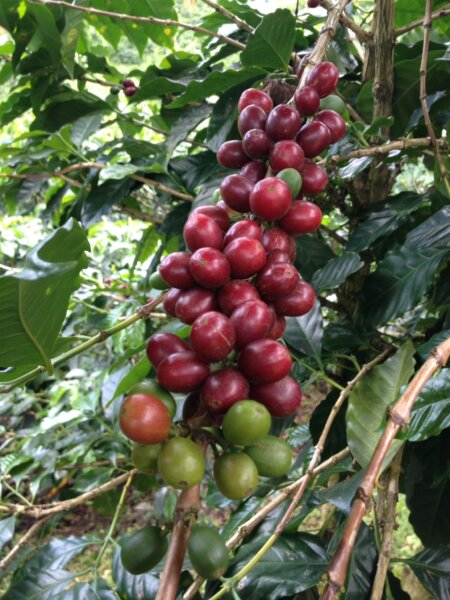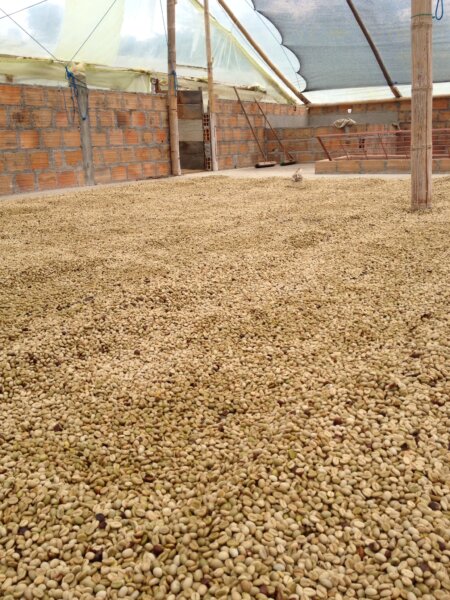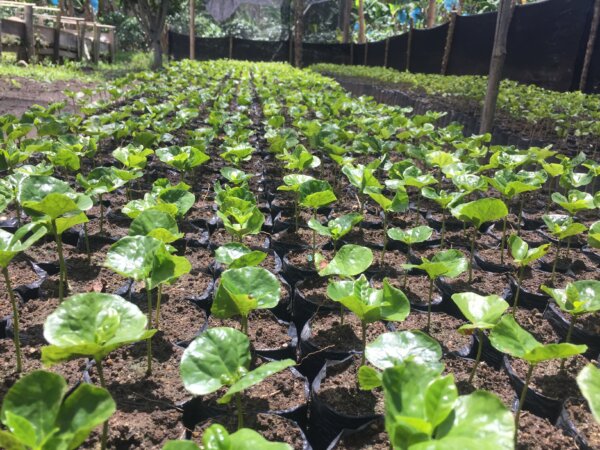About San Agustin Decaf


 San Agustin Decaf is decaffeinated through the EA (ethyl acetate) process. EA decaffeination is a natural process that maintains the integrity of green coffee’s flavor. Ethyl acetate occurs naturally in many fruits, which is why this method is often referred to as natural decaffeination. First, sugars from sugarcane are fermented to create ethyl alcohol. Second, the ethyl alcohol is mixed with acetic acid, resulting in ethyl acetate.
San Agustin Decaf is decaffeinated through the EA (ethyl acetate) process. EA decaffeination is a natural process that maintains the integrity of green coffee’s flavor. Ethyl acetate occurs naturally in many fruits, which is why this method is often referred to as natural decaffeination. First, sugars from sugarcane are fermented to create ethyl alcohol. Second, the ethyl alcohol is mixed with acetic acid, resulting in ethyl acetate.
The EA process begins with a pre-treatment step of steaming beans at a low pressure to remove silver skin (a thin, flaky membrane layer on green coffee beans). Coffee is then moistened with hot water to swell and soften the beans to catalyze the hydrolysis (chemical breakdown of a substance due to reaction with water) of the caffeine, which is bonded to chlorogenic acid inside the coffee. The EA process gently extracts the caffeine from coffee beans, avoiding the use of excessive heat that could damage the structure of the beans. Then, coffee passes to an extractor, where caffeine is removed by repeatedly washing with the natural solvent ethyl acetate.
This process happens several times to complete the extraction stage, removing more than 97% of caffeine. This process creates a weight loss of around 3% of the weight of the green coffee; it takes 60 bags of 70 kg to get 58 bags of 70 kg decaf green coffee. Once caffeine extraction is complete, low-pressure steam is passed over the coffee to strip residual ethyl acetate, which evaporates at 70°C once coffee beans are roasted.
Lastly, the coffee, now decaffeinated and free of ethyl acetate, is vacuum-dried until the moisture content of the coffee is brought back to the moisture level at which it was when it arrived at the EA processing facility.
San Agustin is a particularly well-known part of the Colombian Massif, a group of Andean mountains in Southern Colombia. It houses the largest set of religious monuments and megalithic sculptures in South America, including gods and mythical animals of the Andean culture dating back to the 1st century. The monuments are part of the UNESCO world heritage.
To get to San Agustin we first have to fly to Bogota, then take a local flight from Bogota to Neiva (Huila’s capital). In Neiva we drive for 3-4 hours towards the center of San Agustin. In this trip we traverse the Magdalena River Valley in the Colombian Massif. This is a crucial juncture geographically, housing the mouths of the 3 most important rivers in the area.
San Agustin has always been a coffee growing area. Approximately 80% of the producers here grow coffee on under 3 hectares of land. These small farms are run solely by families, leading to more thorough and intensive management practices and great pride in the final product. Given that the residents of an area are usually all family, hiring external workers during harvest time is unusual.
The journey from farms to the collection center located in Pitalito can take 2-3 hours. Some producers have trucks, but the majority transport their coffee bags tied to the top of the municipal buses. The farms are not easily accessible to the city, so producers take the opportunity to do their shopping for the week when they ride in to drop off their coffee.
In San Agustin, coca cultivation is not as prevalent as in other areas of Colombia. This is because San Agustin is located far from the sea, the main exit route used for illegal coca. San Agustin’s remoteness (its distance from the coast and tourist centers) has helped its inhabitants by reducing the likelihood of youth crime involvement and encouraging growth of legal businesses. But, because it’s so remote, many farms lack property titles, causing producers to live in constant fear that their land will be taken away from them at any moment.
San Agustin’s producers grow Caturra, Colombia, and Castillo varieties. These crops are fertilized in 3 ways depending on the producer. Some use NPK fertilizer (sodium, phosphorus, and potassium), others compost organic waste from the farms and chicken manure, and some mix the 2 methods together. All use shade trees such as the leguminous ice cream bean tree, banana, and eucalyptus. They also grow corn, beans, and fruit for family consumption.
They ferment their coffee in concrete tanks for 12-18 hours before drying for 2 to 3 weeks (depending on climate) on raised beds under parabolic cover or cement patios.
After producers drop off their parchment at the Pitalito collection center, it’s taken to the processing plant in Popayan and stored for decaffeination.




 San Agustin Decaf is decaffeinated through the EA (ethyl acetate) process. EA decaffeination is a natural process that maintains the integrity of green coffee’s flavor. Ethyl acetate occurs naturally in many fruits, which is why this method is often referred to as natural decaffeination. First, sugars from sugarcane are fermented to create ethyl alcohol. Second, the ethyl alcohol is mixed with acetic acid, resulting in ethyl acetate.
San Agustin Decaf is decaffeinated through the EA (ethyl acetate) process. EA decaffeination is a natural process that maintains the integrity of green coffee’s flavor. Ethyl acetate occurs naturally in many fruits, which is why this method is often referred to as natural decaffeination. First, sugars from sugarcane are fermented to create ethyl alcohol. Second, the ethyl alcohol is mixed with acetic acid, resulting in ethyl acetate.